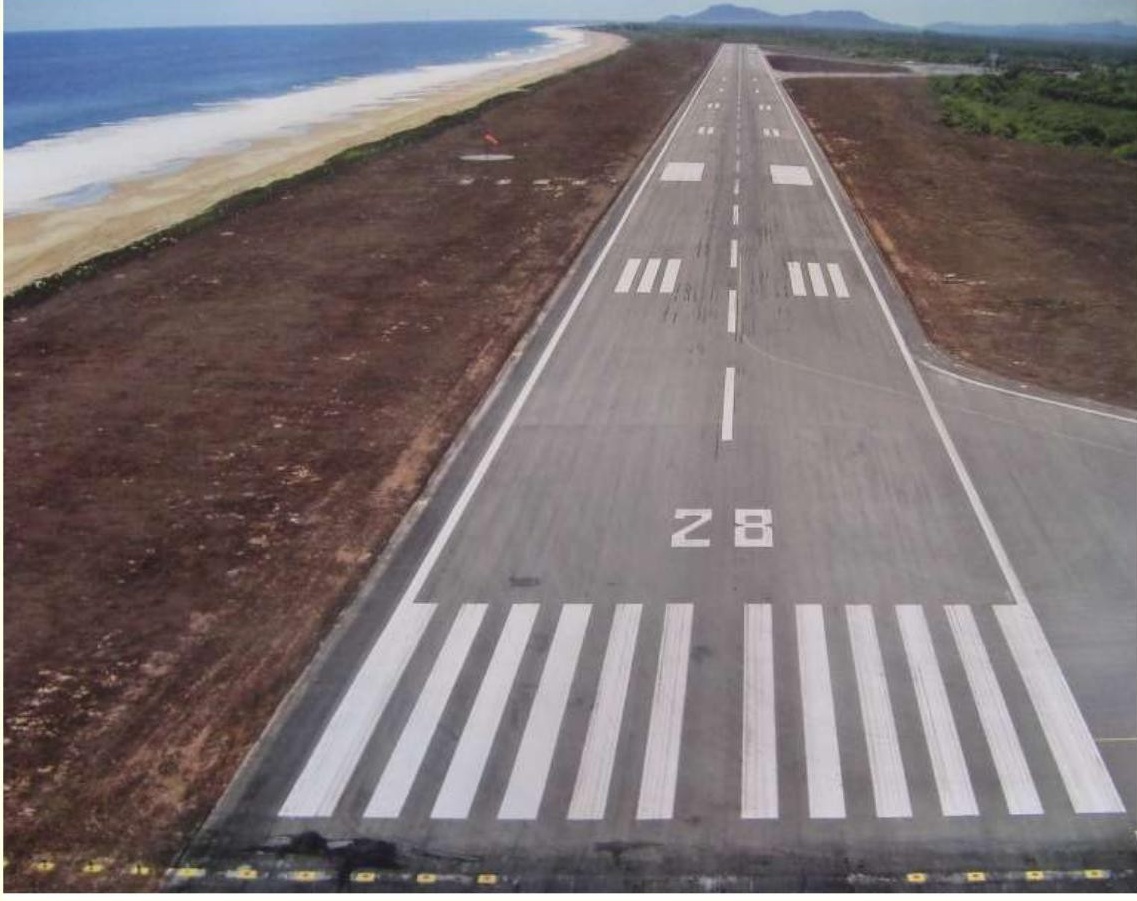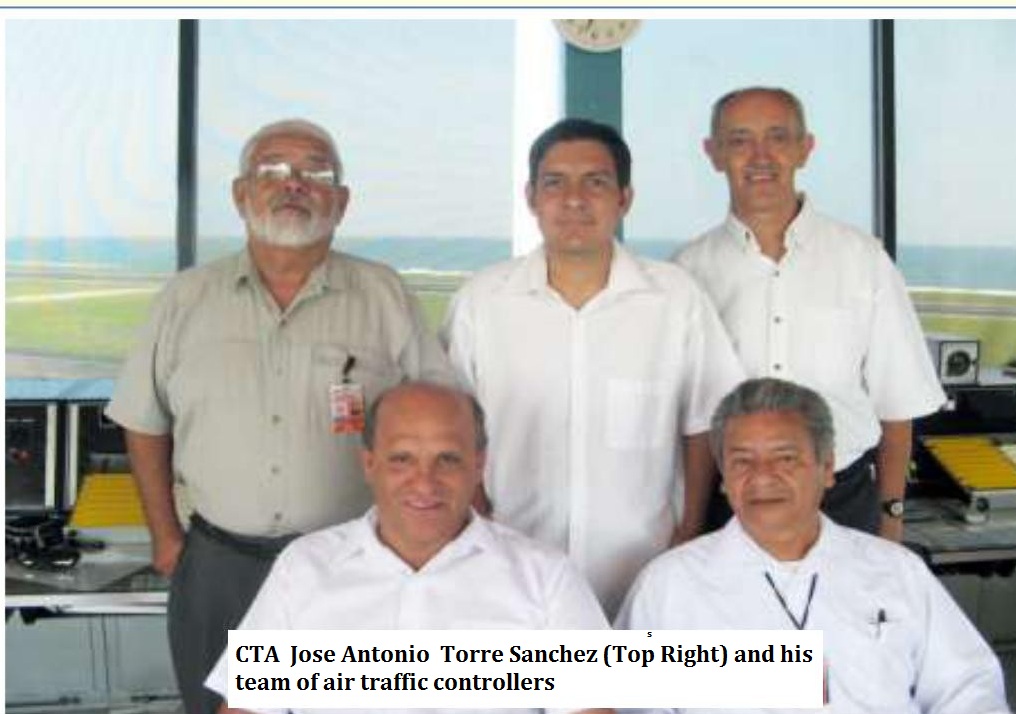By Terry Sovil from the January 2011 Edition
This was a great opportunity to learn more about Air Traffic Control (ATC) and what they do, especially here in Manzanillo. Jose has an incredible background in the industry and has seen most of Mexico in his chosen career.
There are three controllers that work at the Manzanillo airport (airport code “ZLO”). They work in two shifts:
7:30am to 2:30pm and 2:30pm to 9:30pm. The airport is open 8:00am till 8:00pm, closed at night, so this provides overlap in coverage between opening and closing.My expectation was men staring into radar screens in dimly lit rooms but I learned radar is only used at larger airports. Instead there is a network based on size and location of: Control Towers 5 mile range Approach Control 50 mile range Area Control Traffic ‘en route, 21,000 feet or higher.
A plane flying from Mexico City to Manzanillo would contact Manzanillo Approach Control as they passed Colima, 57 miles away.
Manzanillo uses VOR Radio for tracking flights. VOR is VHF (Very High Frequency) Omni-Directional Radio Range, or radio navigation for airplanes. A ground station broadcasts radio signals that allow airplanes to determine a magnetic compass bearing from the station to the airplane. A network of ground stations supports a system of highways in the sky known as “Victor airways” below 18,000 feet and “jetways” above 18,000 feet. An airplane follows a path from station to station by tuning the VOR receiver to arrive at their destination. There are two engineers that support VOR Radio and Communications.
CTA Jose Antonio Torre Sanchez
Jefe De Estacion Head of Traffic Controllers, Manzanillo
Mexico has about 1800 airports, the third largest in airports in the world. The seven largest airports, handling 90% of air traffic, are:
1. Mexico City 5.Tijuana
2. Cancún 6.Acapulco
3. Guadalajara 7.Puerto Vallarta
4. Monterrey
Some airports are privately owned. Mexico City International, which is the largest in Latin America and 44th largest in the world, handles 26 million passengers yearly.
Jose and his team of ATC professionals are currently guiding daily air traffic that averages as follows:
Alaska Airlines, 5 flights per week, (regular service year-round with one flight per week) Continental, 5 flights per week (regular service year-round with one flight per week) Aeromar, 3 flights per day
USAirways, 1 flight per week starting in January to/from Phoenix April thru October Canadian Charter flights, 5 per week (in contrast to 12 per week in 2007)
Minneapolis MN Charter flights, 2 per week, seasonal
Private Planes 25 flights per day
Jose noted that Guadalajara used to be a 5-6 hour drive but with improved road between Guadalajara and Manzanillo it can now be driven in 3-4 hours. This makes air travel expensive and slower with early arrival, takeoff, landing, baggage etc. Guadalajara via bus (1:00am and 6:00am) directly to the airport is convenient for cheaper flights.
Jose’s entry into ATC in 1975 had requirements for a High School diploma, ability to speak English and a 7 month course. Now it is a two year program offered by the Mexican government through the organism providing ATC services in Mexico and English is required.
As All Mexico Supervisor he has visited most all of the bigger cities in Mexico. Jose’s career path has taken him into many positions and locations including:
1976 – Culiacan – ATC
1977 – Tampico – ATC
1979 – Mexico City as an ATC Supervisor
1982-1984 Mexico City as ATC Radar controller
1985 – Manzanillo, working at a Travel Agency 1986-1989 – Out of ATC, Administrator at La Punta 1999- 2004 – Returned to ATC, part-time at La Punta 2004-2008 – ATC full time
2009-Present – promoted to Head ATC in 2009
Jose made a brief return to ATC in 1986 when a plane loaded with cocaine was found at the airport and an Air Traffic Controller was fired. Left without enough workers, his former boss called him because he needed help and staff.
Mexico has three ATC unions. You do not have to be a union member to work in the field. Originally ATC was run by a private company but it failed. The government moved to take over but pay and benefits were substantially less. In 1978 a very successful strike was organized. The strike lasted 15 days and was settled in a month. Over a 10-12 year period from 1998-2010 the jobs have regained status for their contributions to safe travel. After the strike ended the ATC teams had returned normal air traffic in a single day!
A salute to Jose and his team for safe travel in Manzanillo!
Download the full edition or view it online
—
Terry is a founding partner and scuba instructor for Aquatic Sports and Adventures (Deportes y Aventuras Acuáticas) in Manzanillo. A PADI (Professional Association of Dive Instructors) Master Instructor in his 36th year as a PADI Professional. He also holds 15 Specialty Instructor Course ratings. Terry held a US Coast Guard 50-Ton Masters (Captain’s) License. In his past corporate life, he worked in computers from 1973 to 2005 from a computer operator to a project manager for companies including GE Capital Fleet Services and Target. From 2005 to 2008, he developed and oversaw delivery of training to Target’s Loss Prevention (Asset Protection) employees on the West Coast, USA. He led a network of 80+ instructors, evaluated training, performed needs assessments and gathered feedback on the delivery of training, conducted training in Crisis Leadership and Non-Violent Crisis Intervention to Target executives. Independently, he has taught hundreds of hours of skills-based training in American Red Cross CPR, First Aid, SCUBA and sailing and managed a staff of Project Managers at LogicBay in the production of multi-media training and web sites in a fast-paced environment of artists, instructional designers, writers and developers, creating a variety of interactive training and support products for Fortune 1000 companies.




You must be logged in to post a comment.